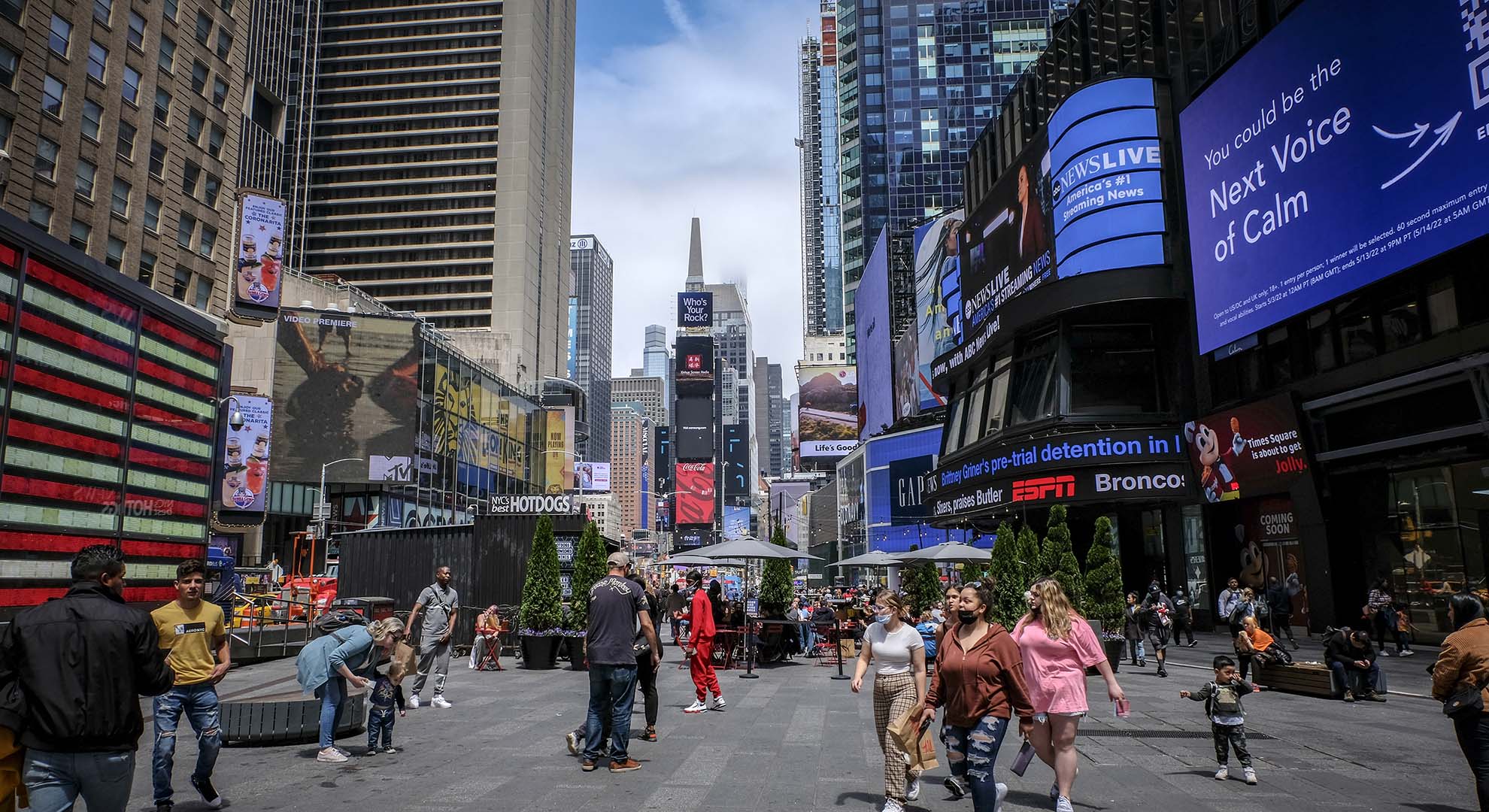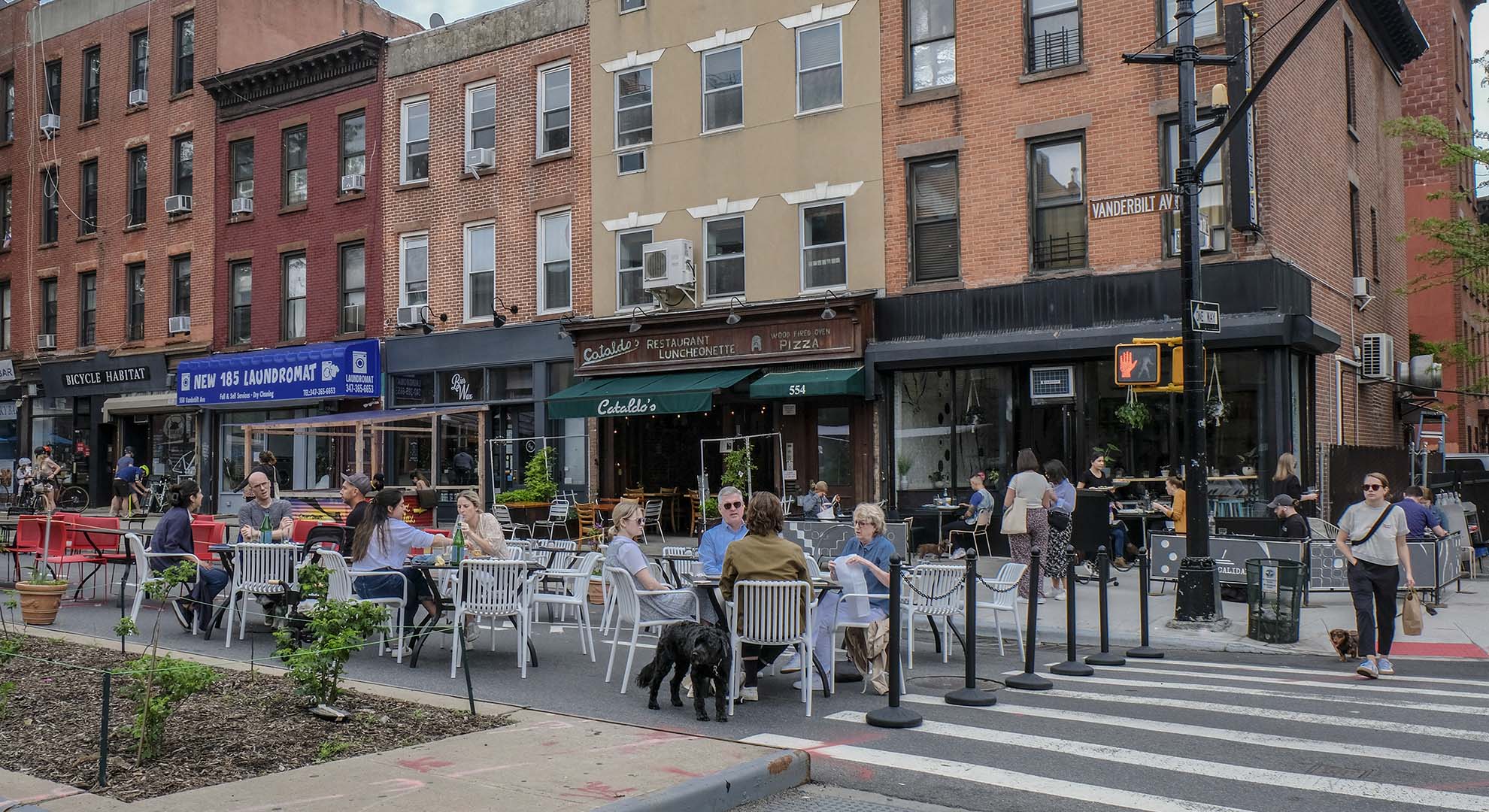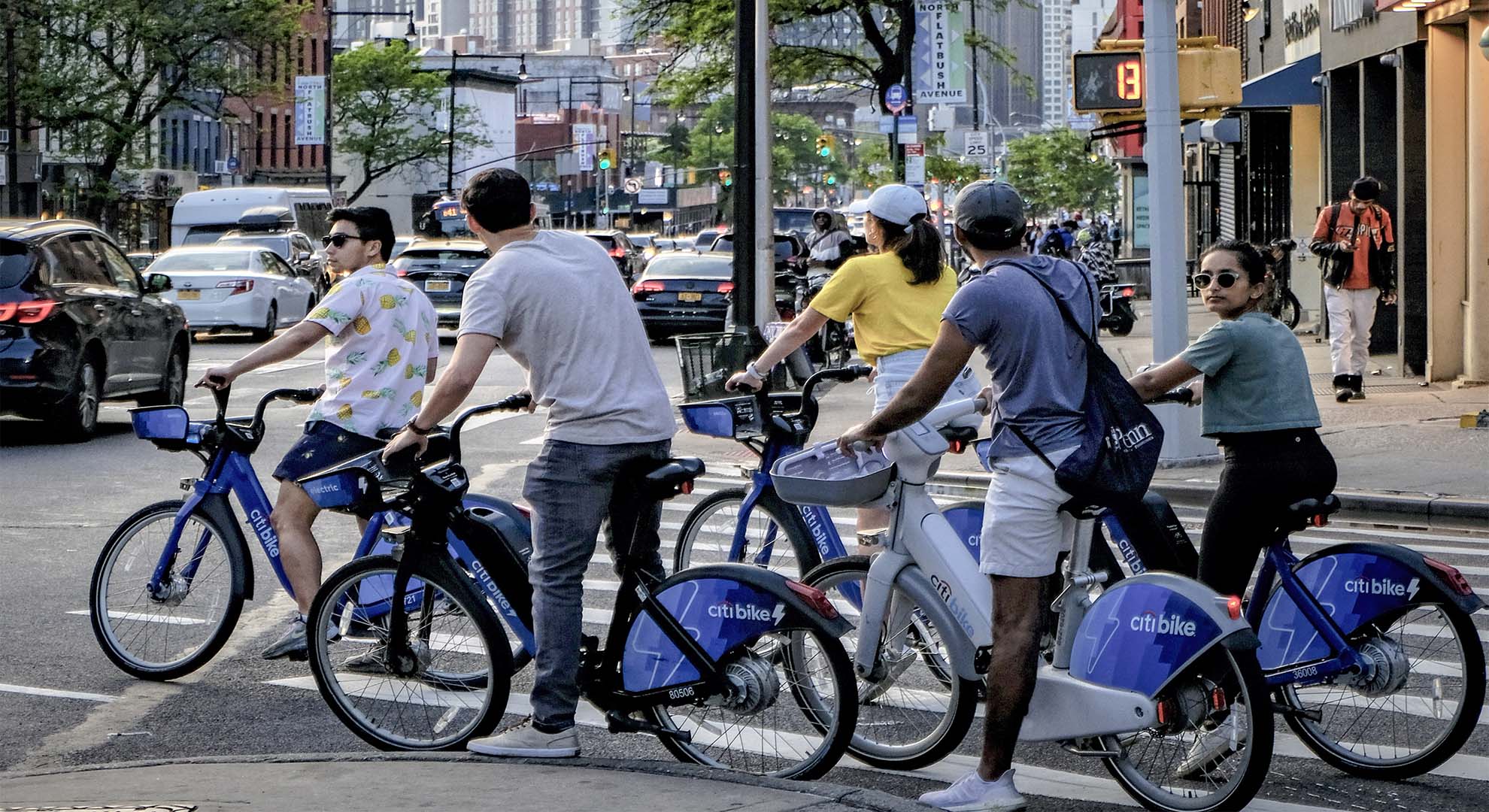Cities transforming
The intersection of mobility and the public realm
We are living in an extraordinary time. The advent and recognition of issues and challenges including climate change, public health, energy sources, and rapid, ongoing, urbanization are causing a reevaluation of many patterns that, over the past 100 plus years have seemed traditional and immutable, such as those affecting cities. Moreover, these patterns, once considered independent of one another, as “silos,” are now seen and known as interconnected components of a holistic existential reality.
In the dense urban core, every square foot of terrain is of extreme value and competed for. No city exemplifies this more than New York which, when ultimately platted by the 1811 Commissioner’s Plan, divided the city into private parcels that could produce tax ratables. Few if any “public spaces” were included although private citizens eventually lobbied for a few and got the undesirable parcels declared “squares”: Union, Madison, Greely, Times. Hence, at that time, the public space, the public realm, was the same as and concomitant with the space between buildings on Manhattan’s public streets.

TIMES SQUARE, NEW YORK, 2022. PHOTO © DANI POWELL
In pre-automobile images you can see people wandering across those streets, using them as entitled citizens. Not until the automobile proliferated and superseded horse-drawn vehicles did the idea of “jaywalking” come into being. Jaywalking disrupted the ever-increasing flow and congestion of traffic and the consumption of fossil fuel. Camillo Sitte in his writings cautioned about the primacy of the automobile and its deleterious effect on the urban realm. Boy, was he right!
Fast forward to 2021. The news is dominated by extraordinary new technologies, continuing concerns about runaway population growth, issues related to public health—both physical and psychological—that were spawned by a global pandemic, and the causes and effects of climate change, along with politics, economics, and war. And all these concerns are eventually manifested physically in our land planning, urban landscape, and architectural design. Car-dependent suburbs continue to sprawl even as we laud and work to emulate the low-rise high-density model of Barcelona and other 19th-century cities.
And here lies the heart of the intersection of mobility and the public realm. The automobile, the internal combustion engine version, is under attack, finally. But the electric version will most likely still compete for the public realm and continue to support urban sprawl. However, more and more cities, towns, and urban centers no longer want to cede their valuable public realm to 3,000 pounds of a stationary metal object occupying their spaces for leisure and health.

VANDERBILT AVENUE, BROOKLYN, NEW YORK, 2022. PHOTO © DANI POWELL
Just Google “carfree cities” and you will find multiple compendiums of cities that have successfully prohibited vehicles from their cores. Fears of commercial failure without vehicular access have been countered by studies showing increased foot traffic and increased sales! Hence things are changing. Streets, our ubiquitous public realm, are being claimed and reclaimed around the world as the rightful and healthy realm of the pedestrian and the activities of a more sustainable urbanization.
Along with the reduction of the automobile downtown is a continued emphasis on public mass transit. Such systems, on grade and below are often more time efficient, less congesting, and more energy efficient than personal transport. And with an increasing appreciation for these aspects, it is also apparent that mobility hubs are, themselves, public space. The great stations and terminals of the world have always been meeting places to meet and greet and in some cases, such as the Rockefeller Center in New York or the central hub in Shanghai, great social and commercial meeting places as well.
In the 21st century, ever-increasing modes of mobility will offer both energy saving and healthier alternatives for urban movement, but new modes often arrive with unforeseen circumstances. As they do we experience dynamic adjustments in modal definitions (pedal bikes vs. electric bikes vs. hybrid bikes), issues of safety, and micromobility conflicts. Not only do bicycles threaten pedestrians, but they also threaten each other. Not to mention skateboards, scooters, and wheelchairs and the shared public space they occupy as well as the different needs of user groups: children, aged, fast walkers, slow walkers, flâneurs.

FLATBUSH AVENUE, BROOKLYN, NEW YORK, 2022. PHOTO © DANI POWELL
Even as Paris leads in pedestrianization, conflicts over street closings, and bikeable streets make the news as parents fear for their children walking to school in fast bike-filled corridors. The contest for who has use—proprietary or otherwise—of the public realm, for anything, is yet to be fully addressed and, as for the city in toto, perhaps it cannot nor ever will be.
The challenges and opportunities of how we use the public realm going forward, be it for movement, entertainment, recreation, commerce, and so on, will likely be defined by the ever-emerging context of our particular times. Think about the effect of the current pandemic on public space and mobility. Movement over all declined in the first phase. In cities around the US restaurants moved outdoors and took over traffic lanes, deliveries had to be rethought, contagion issues effected density and distribution, mass transit declined, and personal transit started to rise.
Now, energy issues are impacting commutation and perhaps mass transit will once again seem the preferred alternative. All this is to say that this current event combined with longer term climate response planning and design will no doubt further increase the currency and importance played by the public realm.
Main image: Carrer d’Aragó, Barcelona, 2022. Photo © Dani Powell